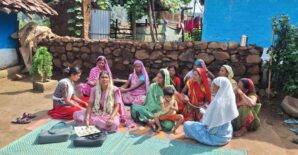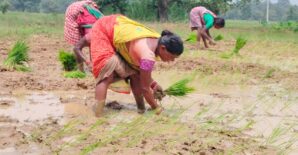Come mid-October, the release of the Global Hunger Index (GHI) causes consternation across India’s media, government and society. The winter sessions of Parliament are filled with questions on India’s performance of that year, with pointed questions asked about actions by the government. That questions are still asked and responded — albeit in a somewhat standard and formulaic way — is a reassuring sign that issues captured in the GHI are salient in politics, society and media.
Indices such as the GHI — or indeed others like the Global Gender Gap Index, the Ease of Doing Business Index - are based on specific indicators that go into composite indices. Unlike indices that are based on country reported actions or commitments,the GHI is based on outcome data, most of which is gathered or reported as part of national statistics. For instance, India’s poor score on the GHI is primarily because of the child undernutrition indicators — stunting and wasting.
Data on those indicators come from India’s own national surveys. This year, much has been made of the data on the undernourished population (a calorie-based indicator calculated by the Food and Agriculture Organisation for all countries). Criticisms are valid, but changes in prevalence of undernourishment indicator will still not affect India’s GHI score very much or its ranking in South Asia.
One could quibble with the index itself, but after all these years — all the way from 2006 — perhaps it is time to just accept that it will be released every year, and accept that it simply reflects the state of the component indicators that go into it. Those indicators are markers of societal challenges that really need all our attention.
India can only improve its GHI ranking every year by increasing its GHI score. Doing so will require several focused efforts.
1) First, a focus on those indicators that affect the score the most. These are child stunting and wasting — any improvement in these is what will reduce India’s GHI score the most. Both these are indicators are focus areas for Poshan Abhiyaan, India’s flagship effort to tackle malnutrition.
2) Actions need to be amplified in the geographies where the risk of being stunted or wasted – growing poorly - is the highest (and here, focus on absolute numbers). One would have to go beyond the aspirational districts, since the goal must be to act in ways that shift national trends. India’s largest states, all of which have high levels of stunting and wasting, and which also have the largest number of children born every year, need much more action.
3) Build on success. States that have outperformed others are being studied rigorously by researchers, including us. Findings from these outliers highlight the value of improving the conditions of girls and women as a primary driver of change in child undernutrition. Other lessons lie around improving household living conditions by reducing poverty and of course, by improving health and nutrition programmes. But one thing is especially clear from the successes — it will take more than a nutrition programme to improve child growth outcomes — it will take acceptance that social determinants are important to tackle, and then it will take efforts from across sectors to focus on those determinants.
4) Focus on prevention. Whether the goal is to tackle stunting or wasting, evidence has been accumulating that we need to start early and we need to focus on the biggest known determinants. Rehabilitating wasted children at an individual level has not been proven to shift community-wide prevalence of stunting; research done by the International Food Policy Research Institute (IFPRI) in the mid-2000s in Haiti demonstrates that the same preventive actions help reduce both stunting and wasting at a community-wide level. These preventive actions include measures to reduce food insecurity for families, deliver health and nutrition care, provide special foods for pregnant and lactating women and their infants, bundling this together with nutrition education. Programmes to deliver these actions exist in India’s vast fabric of policy instruments. The challenges in the worst-off states are of leadership, governance, and financing — these have to come together to ensure focused delivery of all these efforts to the same family, the same mother and the same child.
5) Finally, invest in data. Most global indices are dependent on data collected by countries and released to public domain so they can be included in global databases maintained by the WHO, UNICEF, World Bank, FAO and other global agencies. India’s efforts on ensuring data at the right frequency (every three years, ideally) have been slow even since the first GHI in 2006. For a decade between NFHS-3 and NFHS-4 there was no nationwide data on child growth, for instance. nd now, for more than a decade, there has been no data on household consumption, to allow appropriate updates to indicators such as the prevalence of undernourishment. This is an area where commitments, financing and transparency are critical.
The GHI will come and go every year, but the challenges captured in it are what deserve our full attention. Every data point in a survey comes from a human being, a woman, a child. These numbers are, therefore, markers of the real lives of women, infants, children across India. There is no time to lose in asking whether we are doing all we can to improve those lives. Real action taken today will have impacts all the way to the sustainable development goals (SDGs) in 2030.
Purnima Menon is a Senior Research Fellow at IFPRI .
This opinion piece was originally published in the Deccan Herald. The views expressed in this article are solely of the author.



